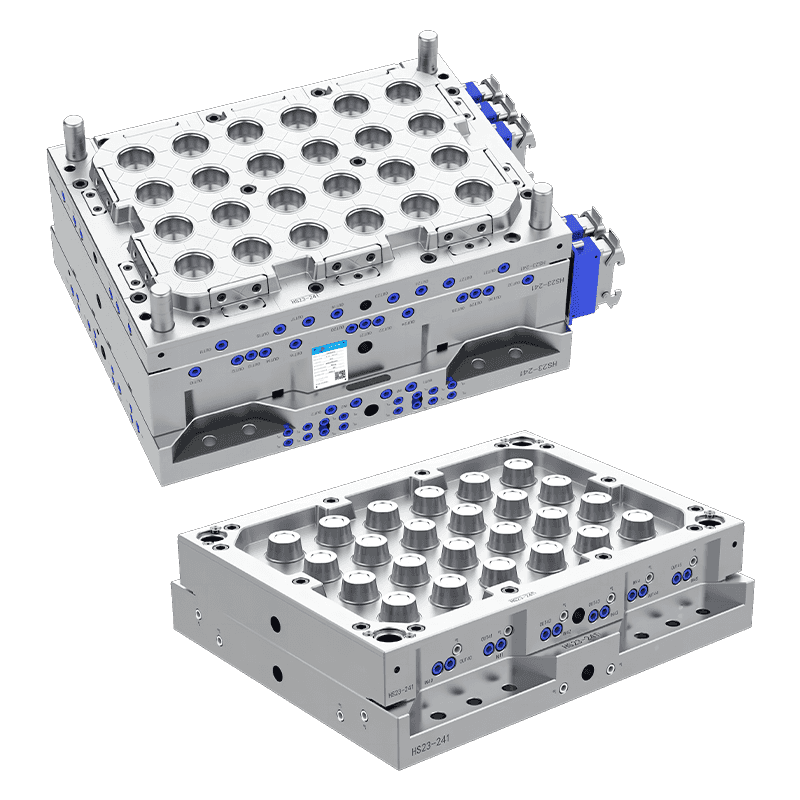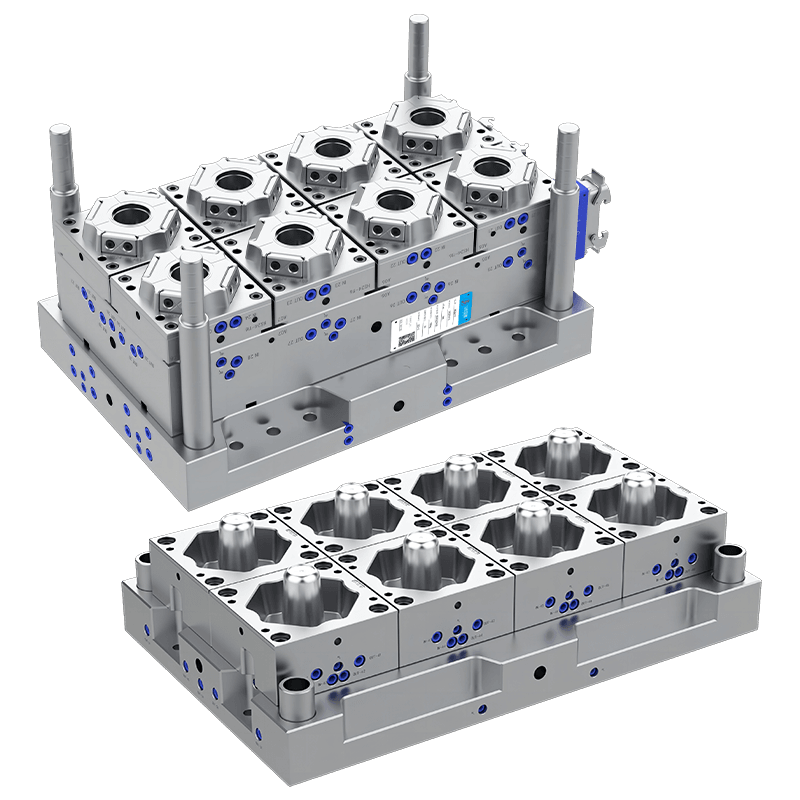Plastic Thin Wall Sauce Cup Molds and Comparing Multi-Color vs. Two-Color Injection Molding
Plastic thin wall sauce cup molds are specifically designed to produce lightweight, durable, and functional containers for sauces and condiments. These molds are essential in the food packaging industry, where the need for cost-effective and efficient packaging solutions is critical.
Key Features of Thin Wall Sauce Cup Molds:
Design and Precision: Thin wall sauce cup molds are engineered to create cups with walls that are typically less than 1 millimeter thick. The precision in design ensures that the cups are uniform in thickness, which is essential for both functionality and aesthetics. High-quality CAD software is used to design these molds, allowing for precise control over dimensions and details.
Material Considerations: These molds are commonly made from durable materials like high-grade steel or aluminum. Steel molds are preferred for high-volume production due to their longevity and resistance to wear. Aluminum molds are often chosen for shorter production runs or where cost-efficiency is a priority.
Production Efficiency: Thin wall molds are designed to production efficiency. They often incorporate features such as advanced cooling systems and optimized flow paths to ensure fast cycle times and consistent product quality.
Quality Control: Ensuring consistent wall thickness and avoiding defects like warping or uneven filling are critical. Regular maintenance and quality checks are crucial to maintaining the performance of thin wall sauce cup molds.
Comparison Between Multi-Color Injection Molding and Two-Color Injection Molding
Injection molding is a versatile manufacturing process used to create a wide range of plastic products. Among the various techniques, multi-color and two-color injection molding are popular methods for enhancing the visual appeal and functionality of plastic parts. Here’s a comparison between these two approaches:
1. Complexity and Cost:
Multi-Color Injection Molding: This method involves using multiple colors of plastic in a single molding process. It can accommodate a broad spectrum of colors and complex designs. However, the complexity of the process requires advanced machinery and precise control over the injection process, which can bring about higher costs. Multi-color molding is ideal for applications where intricate designs and a variety of colors are needed, such as in consumer electronics or decorative items.
Two-Color Injection Molding: This technique uses two different colors of plastic to create a part with distinct color segments. It is less complex compared to multi-color molding, making it more cost-effective. Two-color molding is suitable for products that require a combination of two colors, such as caps with a colored top and a different colored base. The cost and complexity are generally lower, making it a popular choice for many manufacturing applications.
2. Design Flexibility:
Multi-Color Injection Molding: Offers greater design flexibility, allowing for more complex and detailed color patterns. This technique can produce products with multiple colors and shades that are seamlessly integrated. It is ideal for creating visually appealing products with intricate designs and gradients.
Two-Color Injection Molding: Provides good design flexibility but is limited to two distinct colors. It is suitable for simpler color combinations and patterns. This method is effective for creating products with a two-tone appearance or for highlighting specific features through color contrast.
3. Production Efficiency:
Multi-Color Injection Molding: Typically involves longer cycle times and more sophisticated equipment, which can affect overall production efficiency. The complexity of the process requires precise control and coordination of multiple color injections, which can impact the speed and consistency of production.
Two-Color Injection Molding: Generally offers higher production efficiency due to its simpler process compared to multi-color molding. The use of two colors is managed with less complexity, bring about faster cycle times and easier control of the molding process.
Contact Us
Email: [email protected]; Or fill out the contact form below.

 English
English 中文简体
中文简体 русский
русский Español
Español Français
Français




